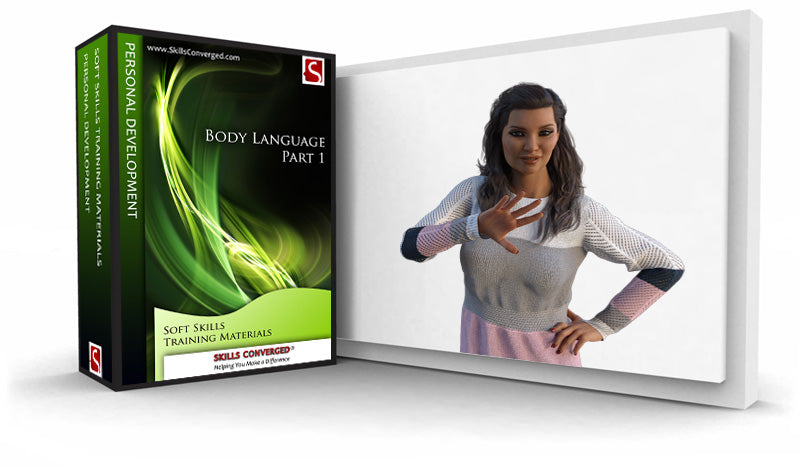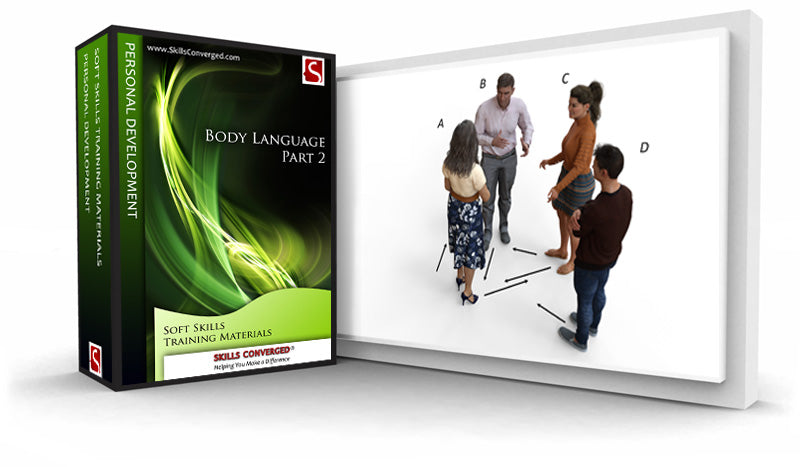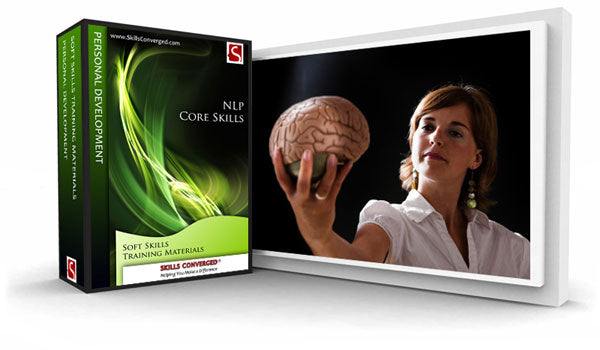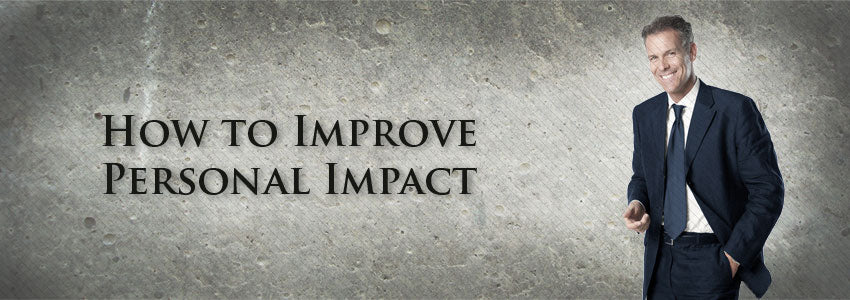
How to Improve Personal Impact
Personal impact is about being listened to, respected and remembered. High impact people have presence. We always think of them as successful people who seem to know what they want in any given situation and seem to be at ease all the time.
One of the principles of personal impact is to stand out from the competition in a good way. It is about being taken seriously, leaving a positive impression and making people want to have you around and interact with you more.
A great part of having a positive presence is effective use of body language. Consider a person with a strong charisma, such as a leader of a nation. Just the way they walk, sit, greet others or stand for photo shoot suggests that they are important, influential and powerful. You read this through observation of their body language.
The following guide covers the do’s and don’ts of personal impact, how to carefully plan your posture, gestures and non-verbal signals to make a positive impression and make others like you.
Don't Cross Your Arms
Crossed arms make you appear defensive. The arms act like a barrier between you and the other person and indicate that you want to protect yourself from them. Studies show that people are more critical if they talked to someone with crossed arms. The recall rate for what is stated in the conversation is 40% less when the other person crosses his arms. If you want to persuade or be remembered, do not cross your arms.
Mirror the Other Person
To build rapport, show that you care. To do this, start by physically mirroring the other person. Match the way they talk by copying their tone of voice and speed of talking. Mirror the sitting position, arm placement, general posture, gestures, facial expression and the mood. This will make them feel more comfortable with you. You can then complement the non-verbal mirroring with verbal mirroring by empathising. This is effectively repeating and reflecting on what they say. All these verbal and non-verbal signals will indicate that you are trustworthy and likable. People are then more likely to open up to you.
Talk With Your Hands at Waist Height
Bringing up your hands can become too distracting. This may also be seen as a barrier and hence a sign of being defensive. Express your statements with careful gestures, emphasising the points you make. For more details see Public Speaking and Body Language.
Avoid Touching Your Face When Under Scrutiny
Research shows that when stressed, blood pressure in the face increases leading to itchiness in various parts of the face, in particular the inside of the nose. It could also lead to sweating on the forehead or neck which again leads to itchiness.
The temptation is to scratch. This is then interpreted as a sign that you are stressed perhaps because you are lying. There are countless body language guides that claim that gestures such as scratching the nose or neck, pulling the earlobes or putting the finger on the lips are conclusive evidence that someone is lying. As stated in the body language of deception, these signals simply show that a person is stressed and don’t necessarily means that the person is lying. However, because there has been a lot of publicity in this area, you are better off avoiding touching your face when under scrutiny or in high-stake situations such as negotiations. This helps you avoid the possibility that the other person misinterprets your body language signal as a sign that you are lying.
This requires practicing, since under scrutiny it is easy to get stressed. You can either work on reducing non-verbal signals that give you away when you are stressed, or reduce your overall stress levels. The first method is doable, but it can be difficult to hide certain non-verbal signals. The second method can be more effective, though it requires more skill to achieve. For this, you would need to calm yourself during stressful situations. Take a deep breath and regulate your heart beat. If done correctly, you are likely to reduce your stress, the itchiness of your face and hence reduce the automatic need to touch your face.
Rest Your Arms on the Chair
The posture of sitting on a chair with elbows on the armrest is interpreted as a person with power. In contrast, arms resting inside the arms of the chair next to the body lead to a poor posture indicating that the person is weak, afraid and defeated.

(A) Arms resting inside the chair along with a defensive posture may indicate weakness or fear. (B) Arms resting on the arms of the chair and the open posture indicates strength and confidence.
Control Emotional Bias
Consider the following image. Click on the placeholder image below to reveal it, then return to the article to continue. Do not read more before you have done this. Keep looking at the image for 10 seconds.
How do you feel? Do you feel happy? You are likely to say yes.
Now, let’s continue with another image. Click on the image below to reveal it.
How do you feel now? Do you feel anxious?
Next, click on the following image to reveal it:
How do you feel? Do you feel depressed?
What is happening here? It seems that you are adopting the same emotional state of the person you are looking at. Research shows that we are hard wired to feel a certain emotion purely based on looking at a specific facial expression.
How does this relate to personal impact? Whatever emotional state you show in your face, others are going to pick up and feel that emotion. In turn, they will express that emotion in their own face, leading to a positive feedback loop.
Here is where the power lies. If you want a person or a group to feel a certain emotion, you can initiate this feeling yourself. They will then mirror this emotion and are likely to actually feel that way too. If you smile, the other person is likely to smile back and when you see their smile you are even more likely to smile. If you start with a concerned face, the other person will look concerned too. You may then become even more concerned and the whole atmosphere can be quite uncomfortable and negative. This could have been avoided by a simple smile or a neutral facial expression to calm the other person. This could then increase the chances of establishing rapport and then moving on to solve problems and address issues.
You can also use this non-verbal emotional bias when a group encounters something new. When people are not feeling strongly negative or positive, the overall mood and body language tends to follow the first reaction expressed by a member of the group. For example, suppose your team is shown a demo of a new software by a salesperson. The group is not particularly positive or negative about it yet. If one member shows enthusiasm and feels excited about it by showing it with his body language, others are likely to follow suit and feel excited too. On the other hand, if the person who expresses the first opinion looks bored and unimpressed, others are likely to follow this negative mood too. Hence, if you want to influence the end result, plan to be the first person that expresses a particular emotion about what you have just experienced both verbally and with your body language.
Adopt a Positive Posture to Feel Confident
As you saw in controlling emotional bias, you can feel a certain emotion simply by adopting a posture. To feel confident, raise your sternum. This is the bone in the middle of your chest plate. When you feel energetic and confident, the bone shifts outwards and slightly upwards. By imitating the same shift deliberately, you can feel confident and also appear confident.
In a study carried out on the effect of posture on confidence, subjects were asked to think about and write down their best and worst qualities (Briñol 2009). They did this in two positions. One position was when their back was erect and their chest was out, which was a confident posture. The other posture was when their back was curved and they were slouched forward, which was a doubtful posture. The results showed that those who were in the confident posture, felt more confident about both their negative and positive attitudes. In other words, the confident posture doesn’t necessarily make you feel positive about the future, it however makes you feel more confident about whatever you think or are about to do.
Adopting a positive posture by raising the chest is commonly used by professional actors, public speakers and politicians who aim to appear confident in front of an audience. It is a simple body language technique, but with great results. Just before you face an audience or enter a meeting, slightly raise your sternum bone, hold your chin high, take several deep breaths, smile, look ahead and then proceed.

A slouched posture leads to more depressing thoughts. Change to a confident posture to feel better.
Lower Your Drink or What You Are Holding
When talking to someone, especially while standing, you might be holding something in your hands. During the course of a conversation, you may unconsciously use what you are holding as a barrier right in front of you. This leads to a defensive posture by you with potential negative consequences. So if you have a drink in your hand, lower it. If you have a notepad, don’t hug it or hold it in front of you as a barrier.
In addition, holding something in your hand such as a pen and moving it around can be quite distracting. If your aim is not to distract (which is usually the case), get rid of anything in your hands as soon as you can and show your open palms to encourage openness.
Don't Rub the Back of Your Head
This gesture usually suggests that you are bored and not interested in the other person. Your body language may suggest that you want to leave, so it is best to avoid it.
Don't Keep Your Hands in Your Pocket
This gestures shows lack of confidence. Hiding hands can also be considered deceptive as if you are hiding something (a weapon perhaps at least in the traditional sense). This rule is also applicable if you are giving public presentations. Hands in pockets would be read by your audience unconsciously as a non-verbal sign that you are unsure of your claims.
Look from Eye to Eye
Many people tend to look at one eye while maintaining an eye contact. Instead, aim to look from eye to eye while listening intently. Soften your expression in your own eyes to give the impression that you care a lot about the other person’s feelings and concerns. This technique was famously used by John F. Kennedy when he was talking to people.
Show that You are Listening With Your Body
When someone is talking, it is important for them to know that they are being heard. Everyone likes a good listener. Use the following body language guidelines on listening to increase your personal impact:
- Lean forward. Leaning forward suggests that your full attention is on the other person and you are determined to hear everything they say.
- Ignore distractions. If you heard a loud sound, saw someone passing by from the corner of your eyes or somebody dropped something, ignore them all. Control your body language to maintain your current posture rather than showing immediate interest in a new distraction. When you ignore distractions, you are sending a strong signal to others that in this environment you are most interested in them and them alone.
- Tilt your head sideways. A tilted head suggests curiosity. Showing curiosity means that you are interested.
- Nod. While someone explains something, nod to visually show you are following them. If you remain still, before long the speaker is likely to pause and ask if what they are saying is clear, naturally getting suspicious whether you are daydreaming or are actually listening to them.
- Produce interest noises. Accompanied with your nods, express your understanding by interest noises such as, “Uh-ha”, “Mmm”, “I see”, “Wow”, etc.
- Adopt a patient body posture. It is crucial to show patience when someone is talking. Glancing at your watch, shifting weight from one leg to another, moving constantly or leaning against a wall suggests that you are getting bored or tired and want the conversation finish. Instead, be patient and focus on showing interest. Avoid repetitive gestures such as swinging feet or drumming fingers which are classic signs of boredom.
References
Briñol, P., Petty, R. E., Wagner, B. (2009) “Body postures effects on self-evaluation: A self-validation approach”, European Journal of Social Psychology, 39, 1053-1064.
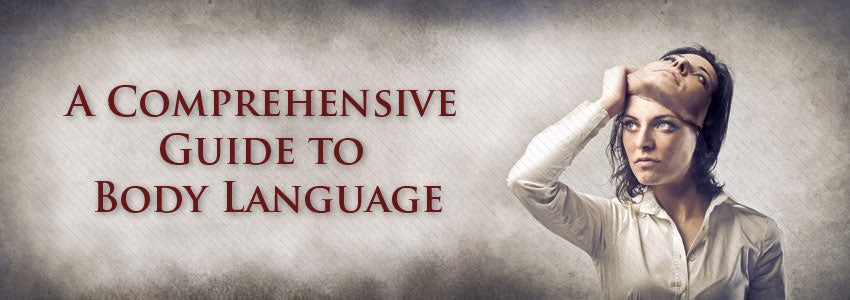
All Articles in the Series
A Comprehensive Guide to Body Language
Origins of Humans and Body Language
How to Read People Using Their Body Language
How to Influence Your Emotional State Using Body Language
Body Language Across Different Cultures
Body Language of Defensive Attitude
Body Language of Good First Impressions
How to Improve Personal Impact
Continue Reading the Body Language Series..
Body Language Guide Article IndexBody Language Training Materials
Body Language Exercises
Explore our collection of free body language training exercises and articles:



Use this body language exercise at the beginning of a session before covering non-verbal communication. The aim is to find out how much delegates already know about this topic and...
The aim of this exercise is to get the delegates think about body language and gestures and observe how such signals can be instrumental while communicating. The training exercise illustrates...
This is an exercise in communication with the aim to increase awareness of body language and non-verbal communications.






